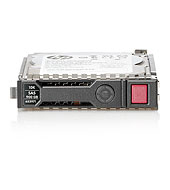New HP Solid State Drives
 In September, our company began shipping the second generation of solid state disks (Solid State Disk, SSD) for HP Proliant servers. During the year that has passed since the first SSD implementation in HP servers, several opportunities have emerged to circumvent the shortcomings of this technology, which still make its way to the hearts of mass customers so thorny.
In September, our company began shipping the second generation of solid state disks (Solid State Disk, SSD) for HP Proliant servers. During the year that has passed since the first SSD implementation in HP servers, several opportunities have emerged to circumvent the shortcomings of this technology, which still make its way to the hearts of mass customers so thorny.The first of the drawbacks - today, SSDs are much more expensive than regular hard drives per gigabyte of data. This growth disorder can be treated in only one way - by increasing the recording density and the production volumes of the discs. We did this: we now have 60 and 120 GB disks in our arsenal.
The second drawback of the SSD is the lower than the magnetic hard drives, the maximum number of read / write cycles, which is especially hard on the devices that serve applications with intensive data processing.
')
To delay the drive’s failure, disk manufacturers today implement at the microcode level algorithms for evenly distributing the load between memory cells, and also recommend buying disks with a reserve capacity and using them only where data is being read (data analysis of financial transactions in real time, CAD, 3D, etc.).
By joining these recommendations, we also switched to the three-gigabit SATA interface. This, in addition to the pleasant increase in I / O speed twice, allowed the use of hot swap drives. For our customers, this will finally allow us to use SSD for critical applications without fear of data loss.
In addition, the new drives come in the standard HP ProLiant Universal Drive Carrier (UDC) 2.5-inch and 3.5-inch form factor drive case, so they can be used not only in blades, but also in most other HP models ProLiant G6 and G5 supporting UDC, as well as in some HP Integrity models.
The actual disk stuffing is made by Samsung Electronics. But since we release them to the market under our own brand, it has been thoroughly tested by HP engineers for several months. Therefore, today, the reliability of SSD drives is approaching high-speed SAS drives . At the same time, they have SSD-specific advantages, which give more space in terms of their use: extended operating temperature ranges (0-60 ° C instead of the usual 10-35 ° C), less heat generation and resistance to shock and vibration.
Other details can be found at hp.com/go/solidstate/ .
In the meantime, tell me, do you think SSD technology still has some disadvantages and advantages that we did not mention?
Source: https://habr.com/ru/post/76134/
All Articles